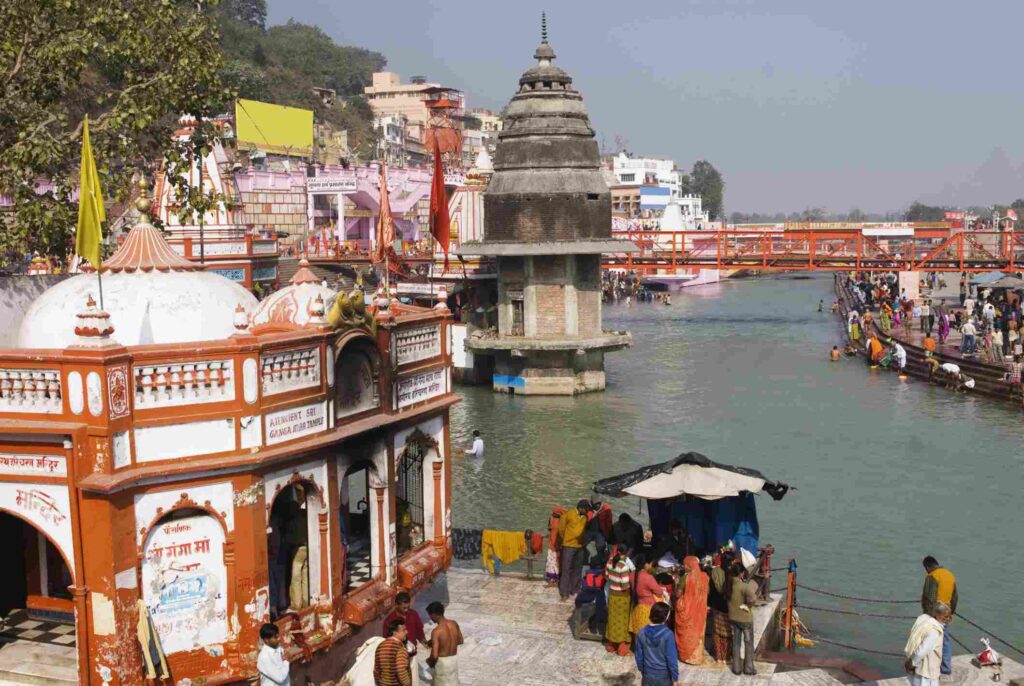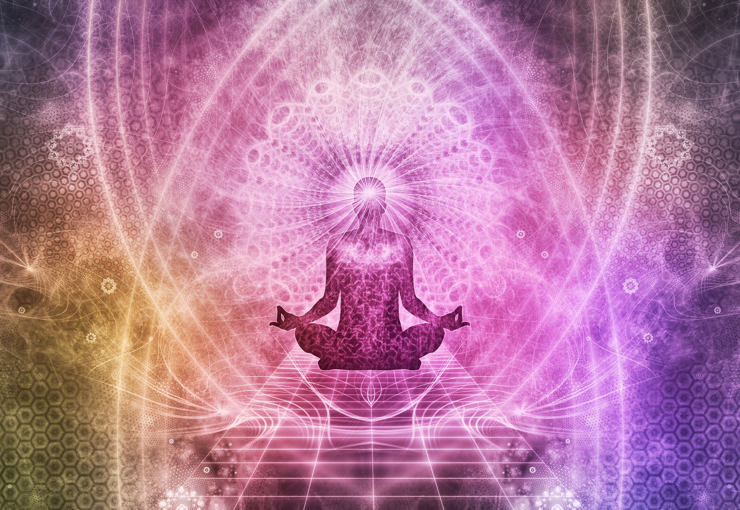
Spiritualism in India has been predominant and its essence can be well experienced in its Culture, Tradition and throughout its history. India, the land of enchantment, is a spiritual haven. Our fascinating country is a spiritual crossroads brimming with vitality and variety.
Understanding Spiritualism
India is a country with a diverse culture, tradition, and history. It is multiracial, multilingual, and diverse. However, India’s essence is “unity in diversity.” There is a sense of interconnectedness and togetherness among the people, despite our socio-cultural and religious differences. India is a wonderful country with wonderful people.
India’s civilization is the world’s oldest, and it contains a wealth of spiritual knowledge and wisdom. Spirituality is, in fact, India’s soul, and people from all over the world come to our country to explore it. The term “spirituality” has different connotations for different people. Spirituality, on the other hand, is a broad term that refers to an understanding of one’s own self and the world around them. Finding the meaning and purpose of our lives is an important aspect of spirituality. While religion emphasises customs, rites, and rituals, spirituality focuses primarily on our inner lives. Since the dawn of time, spirituality has been an integral part of the Indian way of life. The Himalayas, the Yamuna, and the Ganga all inspire us to ponder the meaning of life.
India is a wellspring of spiritual wisdom and knowledge. The Vedas and Upanishads, the Ramayana and Mahabharata, and the Bhagavad Gita are ancient Indian texts that not only teach us morality and values but also awaken us to the realm of spirituality. Consider the Mahabharata, the great Indian epic. Now, the Mahabharata is more than just a storey about a battle between two families (the Pandavas and the Kauravas) for control of a kingdom (Hastinapura).
Value Based Spiritualism
If it had just been about sitting on a throne, the storey would have ended with the Pandavas’ victory. Instead, the storey concludes with the Pandavas and Draupadi renouncing the throne in order to embark on their journey to heaven. Finally, they reach the heavenly realm and peacefully rejoin the Kauravas. The epic’s greatness stems from its emphasis on peace and harmony rather than the violence and bloodshed depicted in it. The epic’s message of love and brotherhood is subtle, but the wise understand that the moral of the storey is to achieve peace and happiness, not wealth and territories.
Spiritualism-based values have made a significant contribution to Indian culture, harnessing the Indian spirit throughout the ages. As a result, spiritually-minded Indians have been able to preserve their Indianness, which would not have been possible otherwise. It was also possible because Indian life is dominated by a temperament that is strongly associated with spiritualism.
The Different Spiritual Systems
As a result, the Indians developed various philosophical and spiritual ideas and gave the world the greatest number of spiritual systems in the form of philosophical ideas such as Nyaya, Vaisheshika, Yoga, and Vedanta. The Vedas give Indians spiritual direction by teaching them the fundamentals of spiritual and moral life. As a result, the Vedic rishis should be regarded as the world’s first spiritual masters, as their mantras resound with the seed of spiritualism, and India as the spiritualism’s cradle. Spiritualism is a heritage as well as a continuous tradition in India. It is not an obsession with the human mind.
Because India has had a long and illustrious spiritual tradition dating back to the Vedic era. The Indian scriptures have made a sublime contribution to Indian spiritualism by covering a wide range of human emotions and aspirations. As a result, India has always held a revered position in the world. The evolution of Indian spiritualism can be traced back to the Vedic age when the spirit was spiritually coded, and great spiritual thinkers like Yajnavalkya, Maitereyi, Gargi, and Nachiketas nurtured the same spirit.
Spiritualism from Indian Prespective
Thus, Indian spiritualism is referred to as a form of philosophy, Darshana or sight, and the Upanishads are regarded as legitimate sources of Indian spiritualism in this form. The height of the country’s wisdom is determined by these, which represent the high Himalayas of Indian spiritualism. To answer the question, what is spiritualism? It is an inner quest; a path to higher truth in life; composite thinking for enlightening the realities of life, for considering life’s challenges, and for evaluating human values.

Spiritualism, on the other hand, encompasses questions about God’s nature, the creation of the world, and the essential values and ethics of a human being. Spiritualism’s final component is ethics, which reflects the good side of Indian culture by emphasising unity in diversity and treating the entire universe as if it were pervaded by one Almighty Brahman.
India is a melting pot of many cultures and religions, all of which have contributed to the spiritual atmosphere that exists here. Gurus and saints abound in our country, and great spiritual leaders like Swami Vivekananda have become spiritual ambassadors for this magnificent country by becoming synonymous with Indian spirituality.
Spiritualism To the World
It’s no surprise that people from all over the world are drawn to India by its spirituality. Many weary souls travel to India in search of peace and fulfilment. India is a vibrant and dynamic country. It is the land of colours and spices, of Holi and Diwali, of rivers and mountains, of enchantment. This magnificent country will remain the spiritual heart of the world for all eternity.
It is known as Buddhiyoga or Samatvarupayoga in the Bhagavad Gita’s terminology. Some people confuse spiritualism with religion, religious cults, and practices. Spiritualism is also seen as an experimental aspect of religion, rather than just a ritual or theological practice. Spiritualism is fundamentally different from religion. As religion affirms a faith or belief in God’s supremacy over beings and matter, it also encourages man to believe in rituals and cultic practices.
Spiritualism, on the other hand, encourages faith in the world’s collective reality and imparts knowledge of God’s oneness with the entire universe. As a result, spiritualism should be considered a theoretical approach to truth, whereas religion should be considered a practical approach to the same goal. Because spiritualism includes some religious practises, some argue that the Fine Arts — music, dance, and painting — are also a part of spiritualism because they represent the experimental side of the religious spirit.
Spiritualism – The Science Of The Soul
Spiritualism is also known as the science of the soul, or adhya atmavidya, which is higher knowledge that aids man in rising above worldly tribulations; it is the knowledge of which everything else in the world is aware. It is also believed that a person who lacks spiritual knowledge will never be successful in any worldly endeavour. As a result, spiritualism holds a significant place in Indian culture.
Spiritual pursuits are preferred by Indians over other human life pursuits such as artha and kama, which are many subordinates to it because they lead to moksha or the state of existence of a jivanmukta or a liberated soul. As a result, spiritual wisdom, which has surpassed material prosperity in India, instils attitudes such as man is divine by nature, as the Vedas extol him as the offspring of the divine — amritasya putra — that the divine being resides in every being high or low, big or small; and that every human being carries divine potentiality within him.

Spiritualism a Complete Philosophy of human Phife
In India, spiritualism is a complete philosophy of human life, a correct way of living and thinking. A spiritual man is one who is free of the dual effects of karma (success or failure); who is free of self-interest and ego hood and sees God everywhere, pervading all beings; who maintains constant communication with God, and this is God’s messenger and benefactor.
Spiritualism, a philosophy of values, if widely adopted, would usher in socially just (satyam), emotionally integral (shivam), and aesthetically beautiful civilisation (Sundaram). It’s no surprise that India’s age-old spiritual formula, which claims that creation is full so the creator, the individual is full equality, and the absolute is full, has become the pinnacle of man’s spiritual speculations on the supreme power.
Spiritualism is often referred to as “the science of the soul,” and it is believed that it can assist a person in rising above all worldly tribulations. It is said that if a person does not gain spiritual knowledge, he or she will never achieve moksha. As a result, spirituality plays a significant role in Indian culture.
How did India’s spirituality develop?
Since ancient times, India’s Rishis and Munis have preferred to pursue spiritual goals rather than material ones. As a result, spiritual wisdom triumphed over material prosperity.
In Indian philosophy, spirituality refers to the proper way of living and thinking.
In Indian spirituality, it is believed that a man who is unaffected by success or failure, who is free of self-interest and ego, can see God everywhere. He is regarded as a messenger of God and a benefactor of humanity once he achieves this state of mind.
In India, spiritualism is based on three core values:
1. Satyam: a civilisation that upholds the rule of law.
2. Shivam: a society that is emotionally sound.
3. Sundaram: a visually appealing community
In India, the spiritual journey has taken several paths. It can be traced back to the Vedas and other scriptures, or it can be as recent as the establishment of ISKON.
The stages of India’s spiritual journey are as follows:
- I: Vedas, Upanishads, and Bhagavad Gita
- II: Mahavira’s and Gautama Buddha’s Teachings
- III: The Bhakti Movement
- IV: The 19th-century movements that were more concerned with human development.
- V: ISKON, Art of Living, Preksha Meditation, Isha Foundation, and other contemporary Indian spiritual movements are included in Phase V.
Indian Religion and Spirituality
According to Indian spirituality, there is only one supreme creator, and he has placed each of us on this planet with a purpose, which is to be compassionate, caring, and loving. As a result, many Indian spiritual thinkers were preoccupied with spreading the message of love and care, as well as the importance of living a real life.

These spiritual thinkers began teaching and spreading the art of living a healthy and fulfilling life by connecting with one’s inner self and using Ayurveda to treat physical ailments. These cultural activities were quickly assimilated into Indian culture.
The belief in God is inextricably linked to Indian philosophy, and because Indian philosophy is rooted in spirituality, spirituality and religion are inextricably linked in India.
Some Scriptures and Spiritual Gurus from the Past:
The Bhagavad Gita (Bhagavad Gita)
The Bhagavad Gita, the ultimate literature of life, best explains the spirituality that takes the form of God. Lord Krishna defines life as a spiritual journey in the Gita. He claims that everything in the world is a manifestation of God and that we must therefore show compassion and gratitude for God’s magnificent creations.
Mahavira\sMahavira
Mahavira, a spiritual thinker, was successful in removing God’s importance or affiliation from our spiritual journey. He disproved the notion that the purpose of our lives was to fulfil God’s will. He preached that inner beauty and soul harmony could be used to gain power.
Mahavira’s final message of universal compassion was as follows:
- Ahimsa (nonviolence) (non-violence)
- Satya is a character in the film Satya (truth)
- Achauray is a character in the game Achauray (non-stealing)
- Brahmacharya is a Brahmacharya who is a (celibacy)
- Aparigraha is a Sanskrit word that means ” (non-possession)
Gautam Buddha
Gautam Buddha, like Mahavira, taught that we should not blindly follow what is written in religious texts. He taught that we should seek the truth and not believe everything we hear because anything can be rumoured. It is expected that one observes and analyses what is said before making an informed decision rather than blindly following it.
The Four Noble Truths were preached by Gautama Buddha.
- Suffering exists, and all states of being are unsatisfactory by definition.
- A desire for existence, non-existence, or pleasure causes all pain and rebirth.
- Suffering and resurrection will come to an end when desire is extinguished.
- The Noble Eightfold Path is one way to let go of hope’s constant agitation.

Spirituality in India Today
Today’s Indian spirituality is based primarily on the principle of achieving peace. As an example, consider the founding of the “Art of Living” (AOL). The goal of Art of Living is to make the world a more peaceful place to live, with a global family free of violence and stress. Individuals, society, the nation, and the world all benefit from AOL’s spiritual movement.
Conflict resolution, disaster and trauma relief, poverty alleviation, women’s empowerment, prisoner rehabilitation, universal education, campaigns against female foeticide, child labour, and environmental sustainability are all areas where Art of Living works.
Today’s Indian Spirituality Not only Indians, but people all over the world look to Indian spiritual Gurus for peace and meaning in their lives. Shri Shri Ravi Shankar, Sadhguru, Brahmakumari, Guru Gaur Gopal Das, and others are among the most well-known.
The problems that humans face change over time, but what remains constant is the search for inner peace, which is something that humans are always looking for. Spirituality is nothing more than a path to inner peace.
The future of Spiritualism
Civilization is defined by spirituality. Spiritualism will exist as long as there is spirit—albeit LIFE. We’ll try to figure out how and what changes might affect spirituality in the future. How will we integrate spirituality into our daily lives?
Science
Science will continue to play an increasingly important role in spirituality. On this point, the Dalai Lama is a pivotal figure in world history, as the first major religious leader to embrace scientific methods wholeheartedly.
While scientific research expands our understanding, scientific thinking reduces our certainty. Science is unable to “prove” the existence of God, all-pervading consciousness, or spiritual realities. Spiritual practises and experiences will become more accessible to religious, spiritual-but-not-religious, and secular humanists alike as they become less reliant on beliefs and dogma.
Spiritual practises such as mindfulness-based stress reduction and compassion meditation will be chosen in part based on evidence about their outcomes.
Future spirituality will be more scientifically informed and humble in its responses to life’s most pressing questions.
Technology
All aspects of our lives, including our spirituality, will continue to be influenced by technology. Headspace and other apps will remind us to meditate or pray. We’ll also make use of technology to improve some spiritual practices. Meditation training, for example, could be improved in the future with non-invasive brain stimulation technology.
While technology can help us in many ways, it can also detract from our personal relationships and divert our attention.

Experiences
More spiritual experiences will be sought and shared. According to research, such experiences can have a significant positive impact on one’s mental health. People will increasingly seek spiritual experiences that combine ancient and modern practices in the future. Sharing spiritual experiences will become less taboo. More groups, such as “mystics anonymous,” will emerge to provide safe spaces for people in the community to discuss these life-changing events.
While we will seek and find more spiritual experiences, there will be a greater emphasis on channelling these experiences into service. Perhaps finding time for a yoga session will become as important as finding time for volunteering. Serving others has always been, and hopefully will continue to be, the true heart of spirituality.
Spiritual experiences will be more accessible in the future, and a greater emphasis will be placed on serving others.
Pluralism
Spirituality will evolve into a more pluralistic state. People will not be excluded from spiritual communities because of their ethnicity, gender, sexual orientation, class, nationality, or ideological differences. Such concerns will fade away, and those who oppose such straightforward, humanistic values will be seen as being on the wrong side of history.
While inclusion will grow within groups, spiritual, religious, and philosophical communities will develop a healthy respect for differences.
Pluralism, in its most basic form, is about “living and letting live.” Pluralism is the polar opposite of “hegemony,” which is the dominance of one belief system over all others. Religious, spiritual, or atheistic hegemony will appear as absurd as nationalistic claims to world dominance do now. Secularism allows people to follow any belief system they want, and thus represents a pluralistic ecosystem in which future spirituality can thrive.
Social Inclusion
Spiritualism in the future will be more socially inclusive, encouraging greater respect for our differences. Spirituality can provide ancient means – enhanced by modern science, technology, ideas, and social progress – to help us find our way to a more flourishing future as we collectively step out into the unknown future.
Note: Contact our Writers at www.eastsidewriters.com for writing Blogs/Articles on any niche. We have experts in various domains from Technology to Finance and from Spirituality to Lifestyle and Entertainment.







Pingback: Self Samadhi - Leaving Your Body At Your Own Will - Eastside Writers
Pingback: Understanding Reincarnation and Beyond - The Myths and Facts.
Pingback: The Cosmic Connection Between You And Your Soulmate - Eastside Writers
Pingback: Vedic Mantra Helps Reduce Your Anxiety And Depression - Eastside Writers
Pingback: The Infamous Tantra Traditions and Sexual Practices - Eastside Writers
Pingback: You Are Your Own God, For You Can Do Wonders That You Believe Only God Can Do! - Eastside Writers